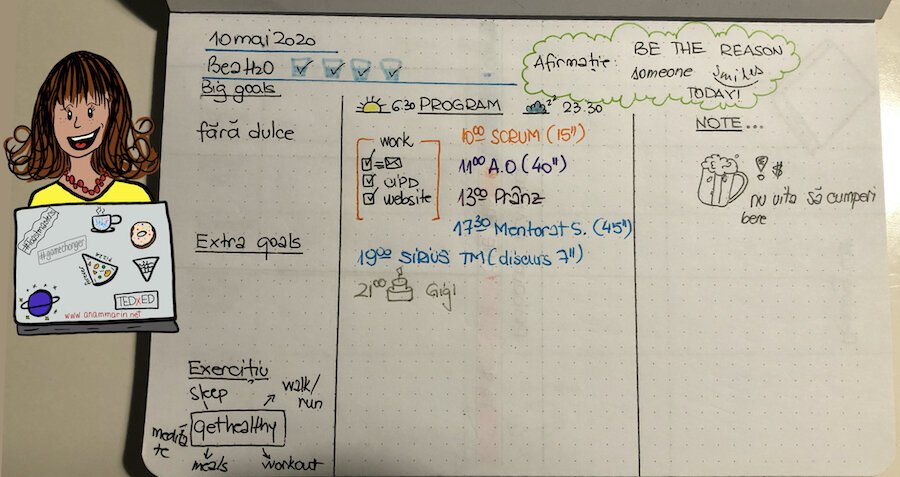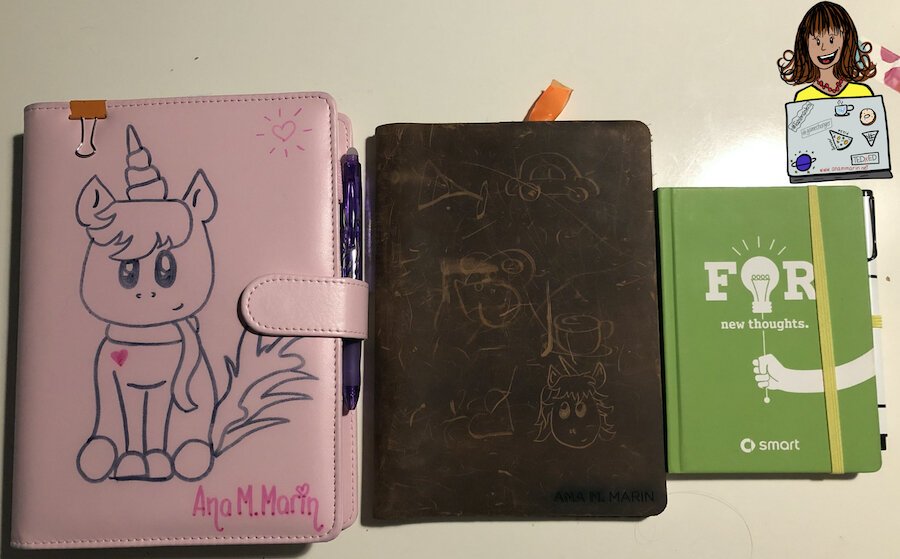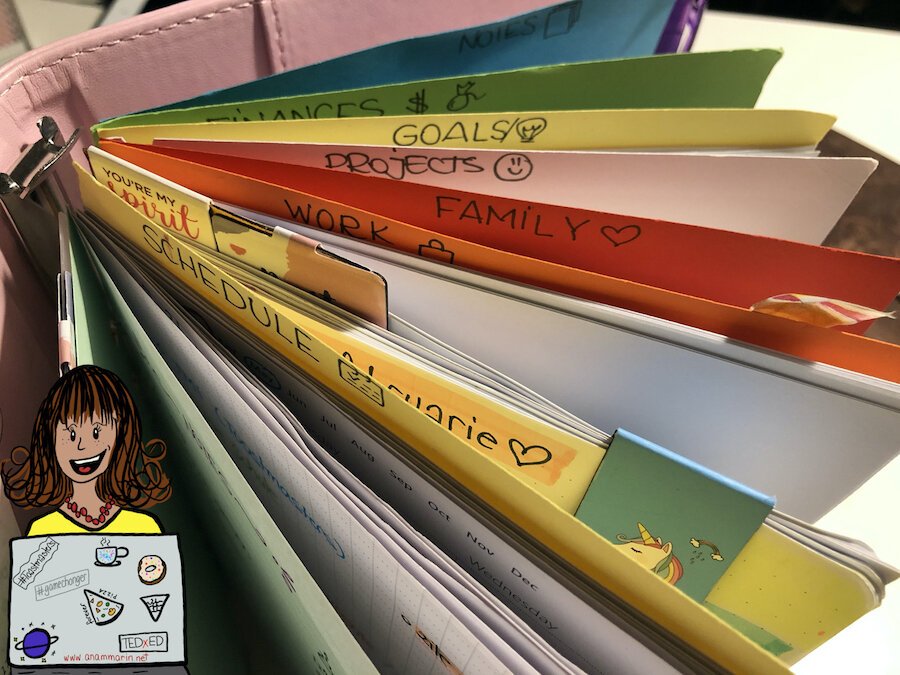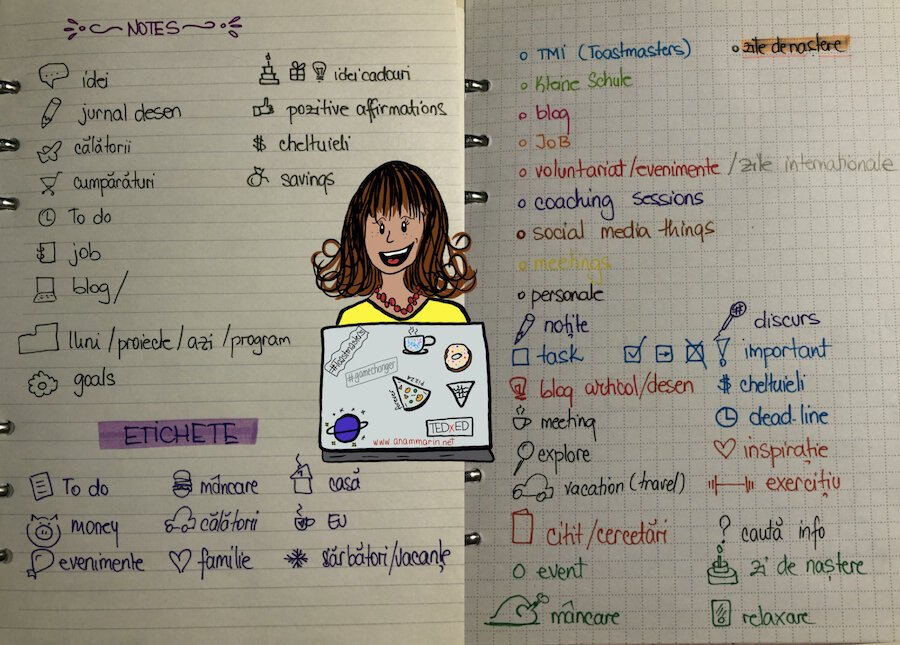Planner / bullet journal = organisation
“Every moment of one’s existence, one is growing into more or retreating into less.”
Norman Mailer
I want to write more often here. But with the crazy online life I enjoy at this moment, is hard to add this to my already long ”to do” list. But in order to put this back on the track, I had to add this site on my planner - cause I know is going to be a long journey that has to start at one point. And since I did ended up putting the idea and the structure of the new website on my planner an idea about a new article on the blog emerged.
How do I keep my life organized?
I have a full job, one collaboration as a teacher for gifted children. I am focused on gaining experience and coaching hours with clients in order to get my Associate Certified Coach accreditation, and EMCC Practitioner…and let’s not forget my volunteer hours with several international organisations.
Bonus: traveling time for events and vacations. I put them together cause I am always involved in something and that needs to have my away times very well planned. So there are only a few pieces of blank paper in my planner. Because - my agenda, planner, bullet journal, or diary - however you want to call it helps me to keep my mind and time in check.
In today’s article, I will talk a little about how to set up a Filofax, about the type of agenda I chose and why, about the tabs, the systems and extra some info about colour-coding that supports me to have a bird eye view over my whole month! My planner that goes everywhere with me is a mix between an artsy (with doodles) bullet journal (BUJO), a planner (time tables, lists, plans, things to check, ideas) and a wallet.
Yes, call me an oldtimer. But writing all down helps me with remembering things since I am a visual learner! And if it is not here (in the planner), it doesn’t happen - according to history. Therefore I decided to share the experience of starting an agenda from zero because my old one disintegrated after one year of heavy usage - so I return to Filofax - my first love.
Before going deeper into this - if you are in the beginning of the journey ask yourself what is the purpose? Could it be productivity, relaxation, reflection (some use it as a mindfulness method), planning or just a way to record your life in your own terms and conditions. After this decision proceed to the next steps.
1. Size
The first steps are to decide on what size you need. You can go with mini, pocket, personal or A5. Or go big or go home you can pick yourself an A4.
2. Refiller or note-book
Now you need to know if you want to go with a refiller (one that you can add papers to it) or just a normal agenda (personalised or not - maybe you want to doodle it). Also decide on the paper design blank, dotted, math or lined.
From the beginning, I decided to have a refiller with blank papers that could be personalised with my needs. In the past, I had an A6 Filofax - that was easy to take it with me everywhere. 12 /18 cm is easy to be carried in your bag, even a smaller one. But this time I decided to have one with a lot of interior pockets, and also practice my doodles. So I went with an A5 - half of an A4. That makes it easy for me to add papers when I need them. Bonus: you can find A5 papers everywhere in different colours.
Here is a picture of the several sizes from the planners I used in the past: green one is a pocket, the brown one is a personal and the pink one is an A5.
3. Partitions
Now decide if you need partitions (tabs, chapters) in it. You can go with a monthly section - where you have all the days in one place. A weekly or a day per page? Or maybe like me, you want a mix. If this is the case, it will work better with a refiller, but I’ve seen it done also in the normal note-books.
4. Needs
Write down your needs before you make a purchase! Don’t throw your money away!
Think about your needs. Maybe a dated agenda - to write down some meetings, deadlines and some extra info would support you enough? Or maybe you need extra space for the planning part cause you have several project in paralel that you work on and it is important to keep notes and milestones on them? Think if your need really need extra space in your agenda before buying a big one.
Here are some examples from my experience - as mentioned I have an A5 easy to procure paper this size, I have partitions with dividers made by me (buget wise) created on my needs. This was done after a reflective session with what are the main topics in my life and what I want to track in next months.
5. System
Find one that works for you or invent it! You have inspiration to choose from:
Bullet Journal the original - like described in Ryder Carroll’s book - an amazing method for productivity and mindfulness for those who are looking for a minimalist approach. For me this book (one of may favorite presents to give to people) added an extra clarification for my system.
tone of inspirationArtsy style of Bujo - you can find a https://www.youtube.com/c/JulianneDoodles on this on youtube from people who are being organised but also introduce their art and style into it.
GTD system (Getting things done) by David Allen - a productivity method tried my millions.
Or create your own inspired by others, in continuu change and adapted to your wishes.
6. Inspiration
You will find so many materials on planning if you go online so many posts that can get you sidetracked. Give yourself the freedom to try everything and all that is - but keep only what serves your reason to be in this story.
Extra: colour-coding
For me this works perfect for more than 4 years by now - it gives me a macro vision of the things that occupy most of my time. Please see below my color-coding masterpieces :).
Each color comes with a doodle representation from my visual dictionary (my own creation that supports me in my visual notes, as well). The pineapple and the unicorn have black in so if I am running out of a color I use the visual representation in black - a very easy way to label my activities. You can also see in the second picture how my visual planner dictionary changed by adding the colors in the doodles. So if you are visual learned, but you don’t want to go overboard - you can start with something easy that serves you. I like complications so this is it for me :)
So here is a recap:
what is your why?
size and paper design - here take into consideration your writing (if you have big lettering than maybe a personal size or an A5 might be what you need);
refill or notebook;
partitions
what are your important projects and do you need to add extra labels?
needs - reflect on them and don’t go on a shopping spree;
inspiration - if it works and serves you;
do you need ”at a glance” codes?
For me, since I personalise my planners I have several types of papers in them. And with every month, I draw extras, which helps me to become more focus and pay attention to the important relations and things in my life. The fulfilment and the balance between the things that matter, my job, my projects are super important for me and the planner supports me in having them present in my life.
So do a bullet journal that tells you a story of happiness, time to do what you need, reflection and love!




